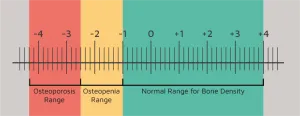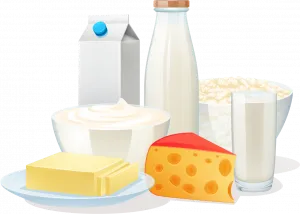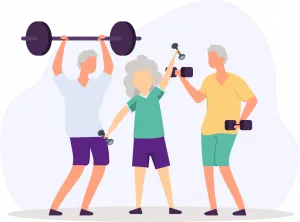General Health | 6 min read
Osteopenia Vs Osteoporosis: What is the Difference?
Medically reviewed by
- Table of Content
Key Takeaways
- Osteopenia and Osteoporosis are often confused with one another
- The best way to determine your bone density is to have a painless, non-invasive test called dual-energy x-ray absorptiom
- consult your doctor if you are at risk of developing osteoporosis
Osteopenia and Osteoporosis are often confused with one another, even though there are multiple differences between the two. The most notable difference is that unlike osteoporosis, osteopenia is not a disease and is symptomless. Another clear indicator is the bone mineral density (BMD). With osteopenia, BMD is lesser than normal but not as severe as osteoporosis. In fact, osteopenia is considered a midway point to osteoporosis and when treated in time, can slow down progressive bone loss.
On the other hand, osteoporosis is a bone condition, where the bones become weak and brittle. It is due to the increased porosity of bones as the BMD decreases. However, in many cases, this condition remains undiagnosed as the bone loss takes place without the patient ever knowing until the first fracture occurs. It is also important to know that osteoporosis gets progressively worse. Based on its severity, it leads to fractures, stooped posture, loss of height, and reduced mobility due to fractures. To know more about these two conditions, read on.
Additional Read: What is Osteoporosis?How to diagnose whether it is Osteopenia or Osteoporosis?
The best way to determine your bone density is to have a painless, non-invasive test called dual-energy x-ray absorptiometry (DXA) scan. The measurements, known as T-scores, determine which category a person falls into, i.e. osteopenia, osteoporosis, or normal.
If your score is between -1.0 to -2.5 you may be diagnosed with osteopenia. A score of -2.5 or below is diagnosed as osteoporosis.

What causes a reduction in bone mineral density?
Reduction in bone mineral density can be due to various factors. With age, bones tend to lose calcium and phosphate and your body may reabsorb them instead of keeping these minerals in your bones. Apart from ageing, there are various other causes that affect the bone mineral density such as:
- Genetics: There may be a predisposition in the family to osteopenia or osteoporosis or to other factors such as genetic disorders that undermine bone health or history of early loss of healthy bone.
- Alcohol: Excessive alcohol drinking can lead to a reduction in bone mineral density.
- Smoking: Men and women who smoke tend to have weaker bones. Especially women who smoke after menopause have a higher chance of fractures.
- Chronic Medical conditions: Many long-term medical conditions can confine you to a bed or a wheelchair. This keeps the muscles and bones from being used and bearing any weight, which leads to osteopenia and osteoporosis.
- Medications: Medicines that treat certain medical conditions can cause osteoporosis such as medications used for epilepsy, seizures, prostate and breast cancer. Long term use of corticosteroids can also increase the risk of osteoporosis.
- Eating disorders: Anorexia, bulimia and other eating disorders can cause lack of nutrition which leads to loss of bone mineral density.
- Hormones: Decrease in oestrogen in women such as during menopause or irregular menstrual cycle and decrease in testosterone in men as they age can cause a loss in bone strength.
- Low body weight: Those who have a thin frame or low body weight are more susceptible to lower bone mineral density.
- Lack of exercise: Lack of exercise will lead to lesser calcium in bones and increased risk of osteoporosis.
- Thyroid disorders: Hyperthyroidism is often linked to more bone breakdown than bone formation.
- Rheumatoid arthritis: This chronic inflammatory disorder affects tissues and joints. Medical treatment of this condition can also lead to osteoporosis.
- Treatments causing poor absorption of calcium and vitamin D: There are certain procedures or conditions that inhabit the absorption of calcium or vitamin D in your body. These can cause a depletion of your bone health and include gastric bypass, cystic fibrosis and celiac disease.
Can we prevent Osteopenia and Osteoporosis?
It is never too late to start taking steps to improve your bone health. Though there are certain factors like age, gender, and family history that can’t be helped, there are ways to build stronger bones. Even if you are already diagnosed with osteoporosis, the following tips can help you slow disease progression.
- Get enough calcium in your diet. Dark green leafy vegetables, orange juice, soy and soy products like soymilk as well as dairy foods are a great way to incorporate calcium. You can take calcium supplements to support your daily requirement too. Menopausal women and men aged over 70 years are recommended to have around 1,300mg of calcium per day.

- Vitamin D is required to absorb calcium. If your exposure to the sunlight is less, a supplement is generally prescribed by doctors. However, you can also eat fatty fish like salmon to boost bone nutrition as they contain vitamin D. This helps your body absorb and put both calcium and omega-3 fatty acids to use.
- Increase the intake of protein in your diet as proteins are the building blocks of bones. Meat, eggs, fish, lentils, sprouts, nuts, nut butter, milk, cheese, yogurt and whole-grain bread are rich sources of proteins.
- Exercise helps in building stronger bones and slowing down the bone loss. Strength training and weight-bearing exercises are essential for you to do regularly to maintain bone health.

- Brisk walking, running, stair climbing, skipping rope and high intensity sports are few examples of weight-bearing exercises. Yoga and tai-chi can help improve balance, posture and coordination. Create a combination of these for yourself, and do them regularly.
- Quit smoking.
- Reduce alcohol intake.
- Reduce the risk of falls of by 'trip proofing’ your home. For example, remove loose rugs, install handrails in the shower and toilet, and make sure all rooms are well lit. You can also wear shoes or sandals that have a skid-proof sole to prevent falling on slippery surfaces.
- Avoid carbonated soft drinks as they contain phosphoric acid, which can increase calcium excretion from the urine and thus leads to bone loss.
- Stress raises the levels of cortisol, which can lead to bone loss. Do meditation, yoga or other relaxing techniques to reduce stress.
In case of any doubts, consult a specialist from the comfort of your home, on Bajaj Finserv Health. Locate a doctor near you in minutes. View their experience, consulting hours, fees and more before booking an e-consult or in-person appointment. Apart from facilitating appointment booking, Bajaj Finserv Health also offers health plans for your family, medicine reminders, healthcare information and discounts from select hospitals and clinics.
- References
- https://www.spine-health.com/conditions/osteoporosis/calcium-and-vitamin-d-requirements
- Disclaimer
Please note that this article is solely meant for informational purposes and Bajaj Finserv Health Limited (“BFHL”) does not shoulder any responsibility of the views/advice/information expressed/given by the writer/reviewer/originator. This article should not be considered as a substitute for any medical advice, diagnosis or treatment. Always consult with your trusted physician/qualified healthcare professional to evaluate your medical condition. The above article has been reviewed by a qualified doctor and BFHL is not responsible for any damages for any information or services provided by any third party.




